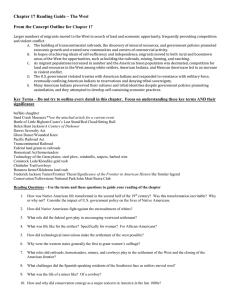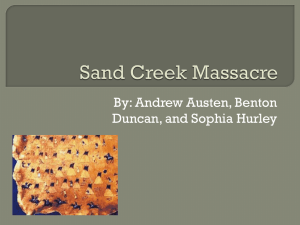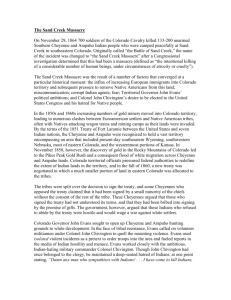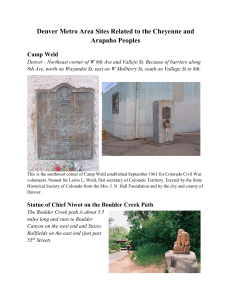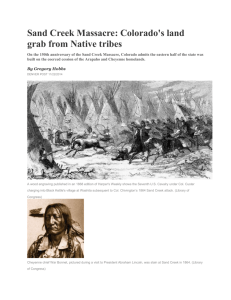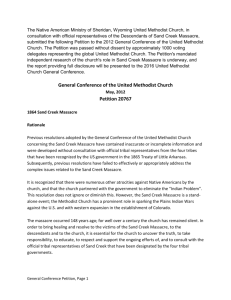this historic speech
advertisement
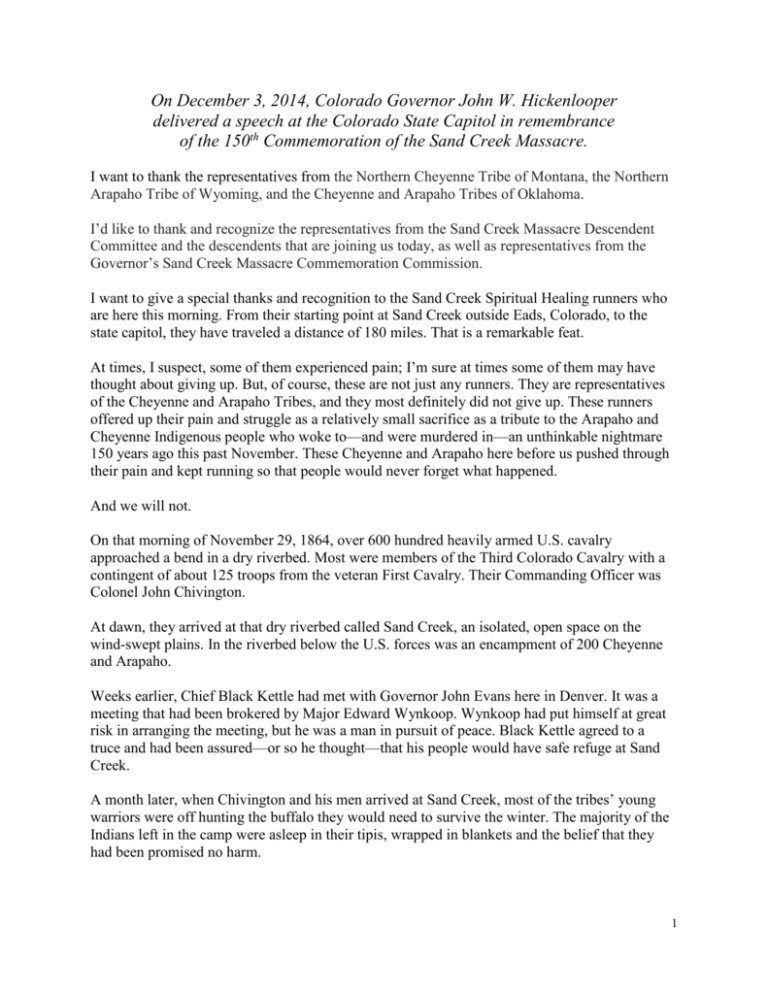
On December 3, 2014, Colorado Governor John W. Hickenlooper delivered a speech at the Colorado State Capitol in remembrance of the 150th Commemoration of the Sand Creek Massacre. I want to thank the representatives from the Northern Cheyenne Tribe of Montana, the Northern Arapaho Tribe of Wyoming, and the Cheyenne and Arapaho Tribes of Oklahoma. I’d like to thank and recognize the representatives from the Sand Creek Massacre Descendent Committee and the descendents that are joining us today, as well as representatives from the Governor’s Sand Creek Massacre Commemoration Commission. I want to give a special thanks and recognition to the Sand Creek Spiritual Healing runners who are here this morning. From their starting point at Sand Creek outside Eads, Colorado, to the state capitol, they have traveled a distance of 180 miles. That is a remarkable feat. At times, I suspect, some of them experienced pain; I’m sure at times some of them may have thought about giving up. But, of course, these are not just any runners. They are representatives of the Cheyenne and Arapaho Tribes, and they most definitely did not give up. These runners offered up their pain and struggle as a relatively small sacrifice as a tribute to the Arapaho and Cheyenne Indigenous people who woke to—and were murdered in—an unthinkable nightmare 150 years ago this past November. These Cheyenne and Arapaho here before us pushed through their pain and kept running so that people would never forget what happened. And we will not. On that morning of November 29, 1864, over 600 hundred heavily armed U.S. cavalry approached a bend in a dry riverbed. Most were members of the Third Colorado Cavalry with a contingent of about 125 troops from the veteran First Cavalry. Their Commanding Officer was Colonel John Chivington. At dawn, they arrived at that dry riverbed called Sand Creek, an isolated, open space on the wind-swept plains. In the riverbed below the U.S. forces was an encampment of 200 Cheyenne and Arapaho. Weeks earlier, Chief Black Kettle had met with Governor John Evans here in Denver. It was a meeting that had been brokered by Major Edward Wynkoop. Wynkoop had put himself at great risk in arranging the meeting, but he was a man in pursuit of peace. Black Kettle agreed to a truce and had been assured—or so he thought—that his people would have safe refuge at Sand Creek. A month later, when Chivington and his men arrived at Sand Creek, most of the tribes’ young warriors were off hunting the buffalo they would need to survive the winter. The majority of the Indians left in the camp were asleep in their tipis, wrapped in blankets and the belief that they had been promised no harm. 1 Looking upon the sleeping tribes, Col. Chivington rallied his troops by reminding them that Native American Warriors had killed white-settler families. Then Chivington gave the order to charge. When the attack began and the shots rang out, Black Kettle exited his tent. He raised a pole with an American flag. The flag had been presented to him by the commissioner of Indian Affairs. So there could be no misunderstanding, Chief Black Kettle also raised a white flag. But the bullets kept coming and Black Kettle retreated. Another chief, White Antelope, ran toward the commanders. A member of the U.S. Forces later testified that White Antelope held up “his hands and shouted, “‘Stop! Stop!’” speaking in plain, clear English. As the firing intensified, White Antelope folded his arms and calmly began to chant what would be his death song: “Nothing lives long, except the Earth and the mountains.” Riddled with bullets, Chief White Antelope crumpled in the creek bed. The massacre lasted for nine hours, well into the afternoon. At one point, after several cavalrymen were killed, the U.S. Forces turned howitzers onto the Indians and cut them down at close-range. According to federal investigations, acts of wanton depravity were rampant. Capt. Silas Soule, who refused to allow the men in his command to participate in the slaughter, later wrote to Major Wynkoop: “I tell you Ned it was hard to see little children on their knees have their brains beat out by men professing to be civilized. One squaw was wounded and a fellow took a hatchet to finish her, she held her arms up to defend her, and he cut one arm off, and held the other with one hand and dashed the hatchet through her brain.” Maj. Scott J. Anthony, in charge of a Fort Lyon battalion, later testified that soldiers used a toddler for target practice as he straggled behind his fleeing family. “I saw one man get off his horse, at a distance of about seventy-five yards, and draw up his rifle and fire—he missed the child,” Maj. Anthony said. “Another man...got down off his horse, kneeled down and fired at the little child, but he missed him. A third man came up and...and fired and the little fellow dropped.” The first Denver newspaper reports of Sand Creek told a different story, one of Calvary heroes fighting off brutal savages. The men of the Third returned to Denver parading their souvenirs. “Cheyenne scalps are getting as thick here now as toads in Egypt,” the Rocky Mountain News reported. Of the Native American victims, about three-fourths were women and children. Among the older men who perished were eleven chiefs—the Arapaho, Left Hand, and ten Cheyennes. Chief Black Kettle survived, but the death of so many key figures created a terrible void in tribal leadership. Because Black Kettle and all of these leaders had favored peace with the American authorities, many southern Plains Indians were now convinced that armed resistance was their only option. 2 In 1865, the “Joint Committee on the Conduct of the War” determined that “the truth” was that Col. Chivington “... surprised and murdered, in cold blood, the unsuspecting men, women, and children on Sand creek, who had every reason to believe they were under the protection of the United States authorities.” Governor John Evans was a founder of both the University of Denver and Northwestern University. This year, both universities convened panels to investigate the role of Governor John Evans. The University of Denver’s panel concluded that Evans’ [actions and in-actions] clearly demonstrate a significant level of culpability for the Sand Creek Massacre.” Northwestern University’s panel found that no “known evidence indicates that John Evans helped plan the Sand Creek Massacre or had any knowledge of it in advance. … “Nonetheless he was one of several individuals who, in serving a flawed and poorly implemented federal Indian policy, helped create a situation that made the Sand Creek Massacre possible.” Northwestern’s report adds that “John Evans’s conduct after the Sand Creek Massacre reveals a deep moral failure that warrants condemnation. While he denied any role in the massacre, he refused to acknowledge, let alone criticize, what had happened, even going so far as to defend and rationalize it.” Today, we gather here to fully acknowledge what happened: the massacre of Sand Creek. There is no rationalizing; there should be no sugar-coating history. We should not be afraid to criticize and condemn that which is inexcusable. So I am here to offer something that has been too long in coming. On behalf of the State of Colorado, I want to apologize. And I don’t make that apology lightly. I talked to all of the living former Governors of Colorado going back for the past forty years, and each one of them agrees and in spirit is standing here beside me. Governor Lamm commented two of the most powerful words in the English language are, “I’m sorry.” To the runners, to the Tribal Leaders, and to all of the Indigenous people—and the proud and painful legacy you all represent—on behalf of the good, peaceful and loving people of Colorado, I want to say, I am sorry for the atrocity that our government and its agents visited upon your ancestors. Today, as these runners complete their 16th annual Sand Creek Spiritual Healing Run, I want to assure you that we will not run from this history, and that we will always work for peace and healing. I will make sure that this history is told. I have a proclamation. [Governor Hickenlooper reads proclamation for Sand Creek Massacre Spiritual Healing Run and Remembrance Days] 3
